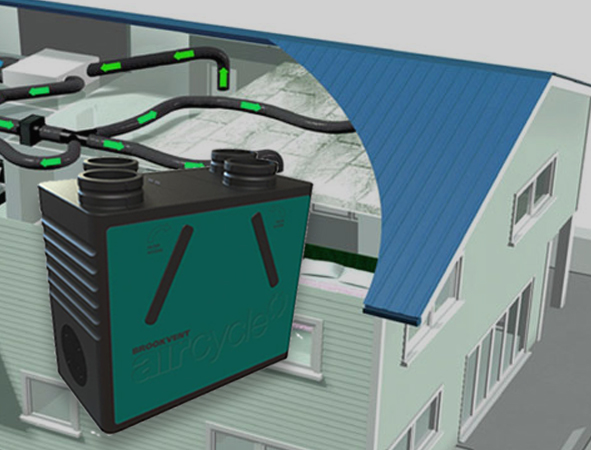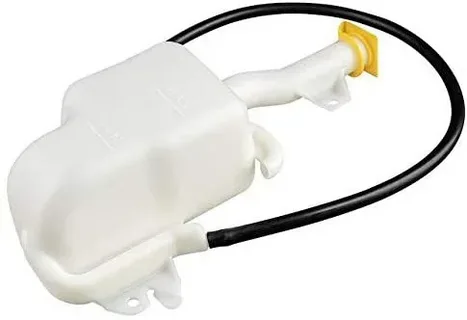The air quality in your home or office plays a pivotal role when it comes to maintaining a comfortable indoor environment. It’s not just about keeping the temperature right; fresh air is essential for our well-being and productivity. Energy recovery ventilators (ERVs) are innovative systems designed to enhance ventilation while conserving energy. These clever devices can help you breathe easier by bringing fresh outdoor air and expelling stale indoor air without wasting energy. Curious how they work? Let’s dive into the exciting world of ERVs and discover their myriad benefits for your living or working spaces!
How do ERVs work?
Energy-recovery ventilators (ERVs) operate on a simple yet effective principle: exchanging stale indoor air with fresh outdoor air while minimizing energy loss. Inside the unit, two separate airflow streams pass through a heat exchanger. One stream carries incoming outdoor air, and the other expels indoor air. This design allows for efficient temperature and humidity transfer between the outgoing and incoming airstreams.
As warm air exits your home during winter, it transfers heat to the cooler incoming air without mixing it. Conversely, this process cools down warm outside air in summer before entering your living space. The moisture exchange also plays a significant role. It helps maintain comfortable humidity levels indoors by transferring excess moisture from humid areas inside to drier outdoor environments or vice versa as needed. This dual-action mechanism ensures you enjoy fresher indoor conditions without straining your heating or cooling systems.
Benefits of Using an ERV in Homes and Offices
Energy-recovery ventilators (ERVs) offer numerous advantages for residential and commercial spaces. One primary benefit is improved air quality. ERVs continuously exchange stale indoor air with fresh outdoor air, reducing pollutants and allergens.
Another significant advantage is energy efficiency. By transferring heat and moisture between incoming and outgoing air, these systems minimize the load on heating and cooling units, leading to lower energy bills.
Comfort is key in any environment. With controlled humidity levels maintained by an ERV, occupants enjoy a consistent atmosphere year-round, avoiding the extremes of too much dryness or dampness.
Additionally, installing an ERV can enhance property value. As more people prioritize sustainable living solutions, an efficient ventilation system becomes desirable in homes and offices.
Reduced carbon footprint plays a role. Using less energy saves money and contributes positively to environmental conservation efforts.
Types of ERVs: Heat Recovery vs Energy Recovery
Energy-recovery ventilators (ERVs) are of two main types: heat recovery ventilators (HRVs) and energy-recovery ventilators (ERVs). Both systems focus on improving indoor air quality while saving energy but operate differently.
HRVs primarily transfer heat between the outgoing stale air and incoming fresh air. They are particularly effective in colder climates, where retaining heat is essential during winter. The warmth from the exhaust air preheats the incoming cold air, reducing heating costs significantly.
On the other hand, ERVs go a step further by transferring both heat and moisture. This feature makes them ideal for areas with high humidity or varying seasonal temperatures. By balancing humidity levels indoors, ERVs help maintain comfort while minimizing energy use throughout the year.
Choosing between an HRV and an ERV largely depends on your specific climate needs and indoor environment preferences. Understanding these differences can help you make a more informed decision for your space.
Factors to Consider when Choosing an ERV
Consider your space’s size when selecting an energy-recovery ventilator (ERV). A unit that’s too small will struggle to provide adequate airflow, while one that’s overly large can lead to inefficiencies.
Look at the climate in your area. Humid regions may require models with enhanced moisture control features, which ensure balanced humidity levels throughout the year.
Energy efficiency ratings are also crucial. Seek out high-rated ERVs, which can translate into lower operational costs and reduced environmental impact over time.
Noise level is another key factor. Some units operate quietly, while others generate noticeable sound during operation. Choose one that fits your comfort requirements.
Think about maintenance needs and access for filters or repairs. An easily accessible system ensures you can keep it running smoothly without hassle.
Installation and Maintenance Tips for ERVs
Installing an energy-recovery ventilator (ERV) can significantly enhance indoor air quality. To simplify connections, begin by selecting a suitable location for the unit, ideally near existing ductwork or outside walls.
- Ensure that you follow the manufacturer’s guidelines during installation. Proper sealing ducts is crucial to prevent leaks that could compromise efficiency.
- Regular maintenance is vital to keeping your ERV functioning optimally. Check and replace filters every three months or as needed based on usage levels. Clean the core regularly to remove dust and debris buildup, which can hinder performance.
- Inspect the fans occasionally for wear and tear. If necessary, lubricate them according to specific instructions in your manual.
Consider scheduling professional check-ups annually. This ensures that everything operates smoothly without unexpected issues cropping up later on.
ERV vs HRV – Choosing the Right Ventilation System for Your Space
When improving indoor air quality, understanding the difference between Energy-recovery ventilators (ERVs) and Heat Recovery Ventilators (HRVs) is essential. ERVs are designed to transfer both heat and moisture. This feature makes them particularly valuable in climates with extreme humidity levels. They help maintain balance by recovering energy from outgoing stale air while introducing fresh outdoor air.
On the other hand, HRVs focus mainly on transferring heat without handling moisture. They’re ideal for dry climates where excess humidity isn’t a concern. By efficiently recycling warmth, they contribute significantly to energy savings during colder months. Choosing between an ERV and an HRV depends mainly on your local climate conditions and specific ventilation needs. Consider how much humidity you deal with daily before deciding what best suits your environment.
Smart Energy-recovery ventilators – Fresh Air Without the Waste
Innovative Energy-recovery ventilators (ERVs) are revolutionizing how we think about indoor air quality. These advanced systems seamlessly integrate with your home or office setup, optimizing airflow without compromising energy efficiency. By utilizing intelligent sensors, smart ERVs can monitor indoor and outdoor conditions in real-time. This capability allows them to adjust ventilation rates automatically, ensuring fresh air is introduced only when needed.
What sets these ventilators apart is their ability to recover energy from outgoing stale air. Instead of wasting heated or cooled air, they transfer this energy to incoming fresh air. The result? A comfortable environment year-round while minimizing utility bills. Moreover, many smart ERVs can be controlled via smartphone apps or integrated into home automation systems. This feature offers unparalleled convenience and control over your indoor climate, making it easier than ever to maintain a healthy living space.
ERV Systems – Enhance Ventilation & Reduce Energy Costs
Energy-recovery ventilators (ERVs) are designed to optimize indoor air quality while minimizing energy consumption. These systems work by transferring heat and humidity between incoming and outgoing air. This process reduces the need for excessive heating or cooling, significantly saving utility bills. By maintaining a balanced airflow, ERVs ensure that spaces feel comfortable year-round without straining HVAC systems. They efficiently introduce fresh outdoor air while exhausting stale indoor air.
Moreover, ERVs help control moisture levels within the home or office. Proper ventilation mitigates mould growth and airborne pollutants, creating a healthier environment for occupants. Investing in an ERV system boosts comfort and aligns with eco-friendly practices. As awareness of energy conservation grows, these units stand out as innovative solutions for modern living spaces.
Best Energy-recovery ventilators – Fresh Air with Energy Savings
Regarding energy-recovery ventilators, not all models are created equal. The best ERVs combine advanced technology with user-friendly features. They efficiently exchange stale indoor air for fresh outdoor air while minimizing energy loss. Look for units equipped with high-efficiency filters that capture dust, pollen, and other allergens. This is especially important in homes or offices in urban areas where air quality can be compromised.
Smart ERVs offer programmable settings and connectivity options. You can control them remotely via smartphone apps, ensuring optimal performance tailored to your schedule and preferences. Consider the noise level as well; quieter operation enhances comfort without disrupting daily activities. Energy ratings matter—select a model that boasts high-efficiency scores to maximize savings on utility bills over time. Remember to check warranty details, too; robust warranties reflect manufacturer confidence in their products and provide peace of mind for your investment.
Energy-Efficient Ventilation – How an ERV Can Benefit You
Energy-efficient ventilation is key to maintaining a comfortable indoor environment. An energy-recovery ventilator (ERV) can transform how you approach air quality in your home or office. By exchanging stale indoor air with fresh outdoor air, ERVs minimize the energy loss typically associated with traditional ventilation systems. They capture heat and moisture from outgoing air and transfer it to incoming air. This process helps maintain optimal humidity levels while reducing heating and cooling demands.
The result? Lower energy bills without sacrificing comfort. You enjoy fresher air year-round, enhancing both health and productivity. In addition, an ERV filters out pollutants before entering your space, improving indoor air quality. The ability to manage temperature and humidity makes these systems especially beneficial for spaces prone to mould or mildew growth. Investing in an ERV means embracing sustainability while enjoying a healthier living or working environment.
Conclusion
As awareness of environmental sustainability grows, the demand for ERVs will likely increase. This technology not only reduces energy costs but also enhances comfort. Investing in an energy recovery ventilator can lead to long-term benefits. Improved ventilation contributes to a healthier living or working environment. For anyone considering an upgrade, exploring the latest models can uncover features that align perfectly with your needs and values. The exemplary system makes all the difference in creating spaces that breathe easily while staying economical and eco-friendly.
FAQs
What is the difference between an HRV and an ERV?
HRVs (Heat Recovery Ventilators) primarily exchange heat between incoming and outgoing air, focusing on temperature regulation. On the other hand, ERVs transfer heat and moisture, balancing humidity levels and maintaining thermal comfort.
How often should I maintain my energy recovery ventilator?
Regular maintenance is crucial for optimal performance. Depending on usage, filters should be checked every 1-3 months. Comprehensive servicing should ideally occur once a year to ensure all components function correctly.
Can installing an ERV help with allergies?
Yes! By continuously exchanging stale indoor air with fresh outdoor air while filtering pollutants, allergens can be significantly reduced. This creates a healthier living environment for everyone.
| Related Business Listings |
| Contact Directory |
| Local Business Profiles |




